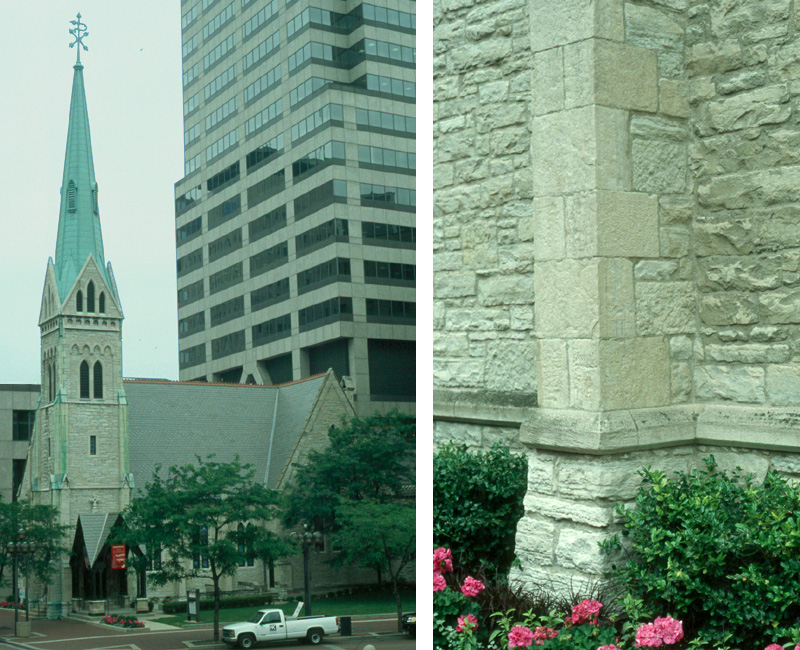Indian Limestones in Christ Church
|
The building below is Christ Church Cathedral in Indianapolis, Indiana. The church was built in 1857 and 1858, replacing a wooden building dating from 1837. It sits on Monument Circle in the heart of downtown Indianapolis, and it is the last of five churches on Monument Circle - the other four sold their valuable real estate for modern high-rise buildings like those seen in the background. The church is built of three limestones quarried in Indiana. They can all be seen on the right side of the image above. The quoins and buttresses are Jeffersonville Limestone, a finely laminated fine-grained limestone of Devonian age. The second image below shows a buttress of blocks of Jeffersonville; the blocks are turned with the bedding alternately horizontal and vertical, and tool marks left from dressing the stone can be seen too. The steps, door and window frames, lintels, and belt course are Salem Limestone, a coarse-grained limestone of Mississippian age. The third image below shows a belt course (a horizontal band of stones) of Salem. The range of ages of limestone used thus span about 70 million years, from the mid-Silurian (about 420 million years ago) to the early-to-mid Devonian (about 390 million years ago) to the early-to-mid Mississippian (about 350 million years ago). Each of the limestones consists of sediment deposited on the seafloor, evidence of the extent to which central North America was flooded by seas repeatedly in the Paleozoic. |




